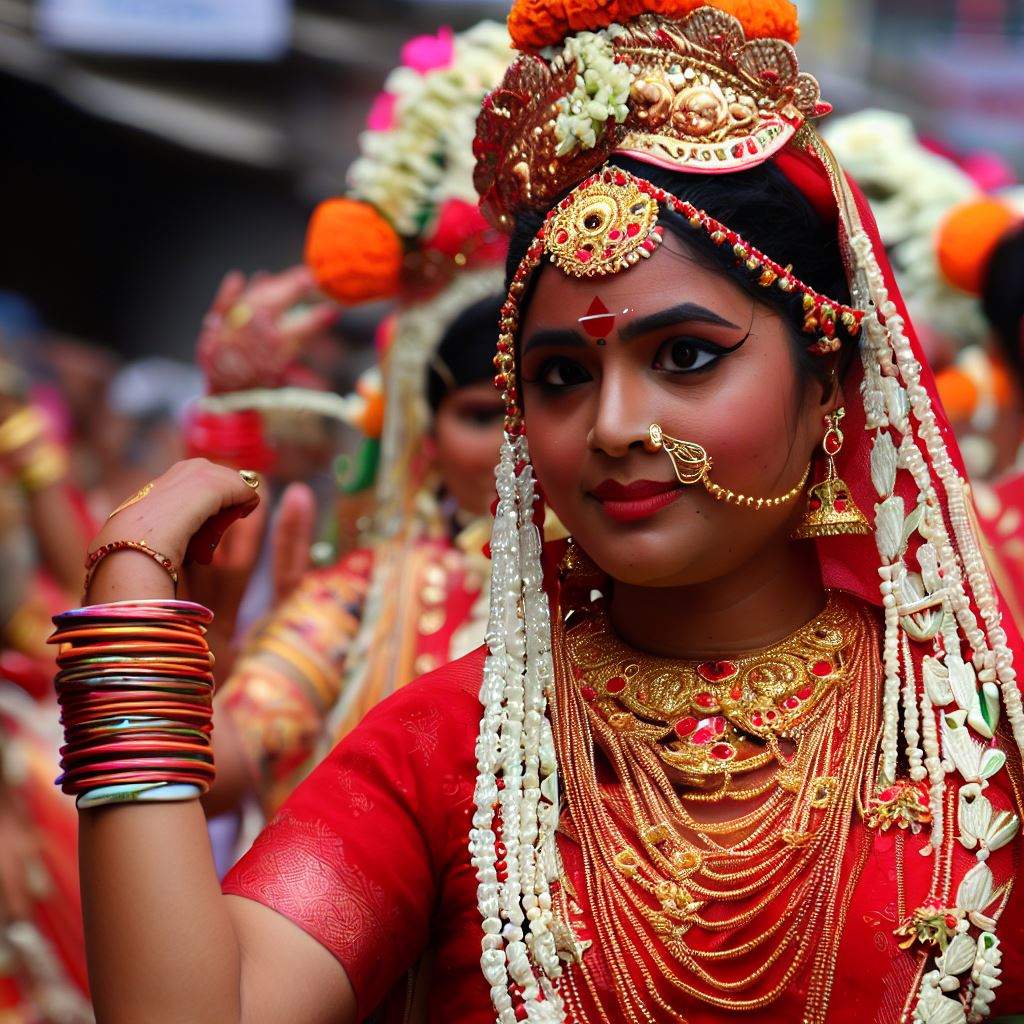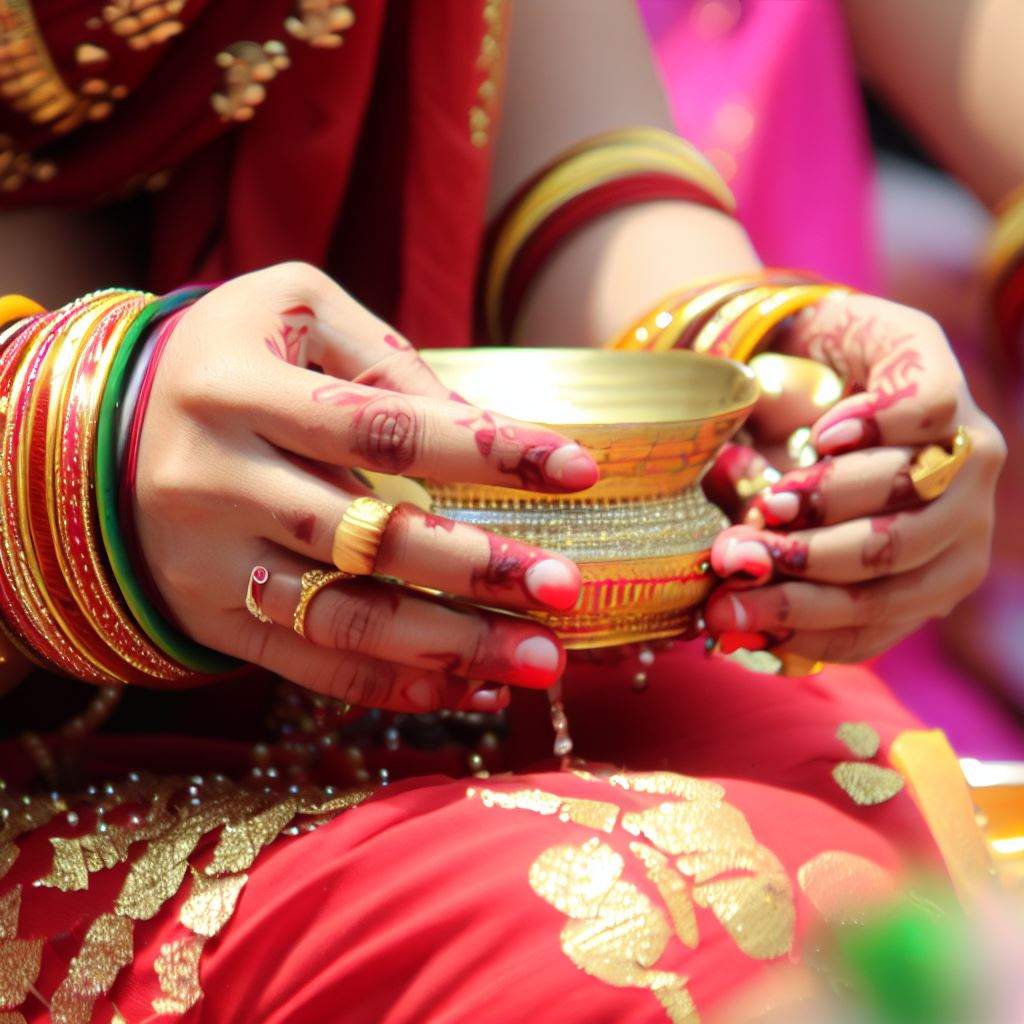Introduction
Nepal is a country deep in the Himalayas with abundant tradition and culture. Teej is one of the most vibrant celebrations in this beautiful nation. Hindu women celebrate the Hindu festival of Teej. It’s a joyous occasion with songs, dances, and lavish feasts. The festival is a huge success, attracting visitors worldwide to Nepal’s rich culture.
Teej: A Historical Perspective
The roots of Teej can be traced back centuries, with its origins deeply intertwined with Hindu mythology. It is believed to commemorate the reunion of Lord Shiva and Goddess Parvati, a divine reunion that symbolizes the inseparable bond between husband and wife. According to Hindu scriptures, Goddess Parvati observed strict fasting and rigorous penance to win the heart of Lord Shiva as her husband. Teej, therefore, is a celebration of this enduring love story.
The festival is celebrated on the third day of Bhadra, the lunar month corresponding to August or early September in the Gregorian calendar. The timing is significant, as it marks the monsoon season’s end and the beginning of the harvest season in Nepal. This agricultural connection adds an extra layer of importance to the festival, making it a time for farmers to rejoice and seek blessings for a bountiful harvest.

Customs and Traditions
Teej is characterized by a myriad of customs and traditions that bind communities together. One of the central rituals involves women fasting from dawn till dusk, refraining from food and water. This fast symbolizes devotion, purity, and the enduring strength of women. Married women fast to ensure the well-being and longevity of their husbands, while unmarried girls fast with the hope of finding an ideal life partner.
The fast is broken after the moonrise, usually accompanied by a grand feast. The sight of women dressed in red and green sarees, adorned with intricate henna designs on their hands, is a visual spectacle. Women gather in temples to pray to Lord Shiva and Goddess Parvati, singing the devotional “Teej geet”, narrating the divine love story. Often accompanied by traditional instruments, these songs fill the air with melodies that touch the soul.

The Swing of Joy
One of the most iconic aspects of Teej is the beautifully decorated swings, or “jhulas,” that are set up in courtyards and open spaces. Women of all ages, dressed in their finest attire, take turns swinging high into the air. This joyous activity symbolizes the exhilaration of love, freedom, and unity. Swinging together fosters community among women as they share stories, laughter, and songs.
The jhulas are adorned with flowers, leaves, and colorful fabrics, creating a captivating and picturesque scene. The vibrant atmosphere is further enhanced by the aroma of traditional delicacies being prepared nearby, such as “sel roti” (rice flour doughnuts) and “malpuwa” (sweet pancakes). These treats are shared among family and friends, spreading the festive spirit.
Empowering Women through Teej
Teej holds profound significance in the context of women’s empowerment. While it is deeply rooted in tradition, it has also evolved to become a platform for women to assert their identity, voice, and rights. The festival allows women to break free from daily routines and express themselves through dance, music, and camaraderie.
In recent years, Teej has witnessed a resurgence in popularity, thanks to the efforts of women’s organizations and activists. They have transformed Teej into a platform for raising awareness about gender equality, domestic violence, and education for girls. The festival now includes discussions, seminars, and awareness campaigns promoting women’s rights and social change.
Breaking Stereotypes
Teej played an important role in challenging gender stereotypes prevalent in Nepal. In the past, women had to submit and be submissive. They also had few opportunities for advancement in education or careers. As Teej became more popular, it symbolized women’s resilience and ability to overcome societal restrictions.
It has been suggested that the festival, which emphasizes women fasting for devotion as an act of dedication, is a sign of inner strength. This festival encourages women not to give up and believes in them. The perspective shift has enabled countless women in many fields to achieve education, career, and leadership positions.
Modern Celebrations
In contemporary Nepal, Teej has evolved to cater to its people’s changing lifestyles and values. While the essence of the festival remains intact, the celebrations have embraced modern elements. Women now participate in creative dance performances and talent shows and even compete in sports events explicitly organized for Teej.
The festival has also become an occasion for family reunions, with women returning to their parental homes to celebrate with their mothers and sisters. This reinforces the bonds of sisterhood and family unity. The exchange of gifts, such as clothing and jewelry, adds a touch of modernity to the traditional festivities.

Challenges and Criticisms
Despite its many virtues, Teej has its challenges and criticisms. Some argue that the festival’s emphasis on women’s fasting can be physically demanding and potentially harmful. Dehydration and exhaustion are real concerns, especially in the scorching heat of late summer. There have been calls for a more health-conscious approach, encouraging women to fast responsibly and prioritize their well-being.
Some critics argue that Teej reinforces traditional gender roles and stereotypes by placing the onus of fasting and devotion solely on women. They contend that the festival should evolve further to promote gender equality in both its rituals and messaging. Efforts are being made to address these concerns and create a more inclusive Teej celebration.










